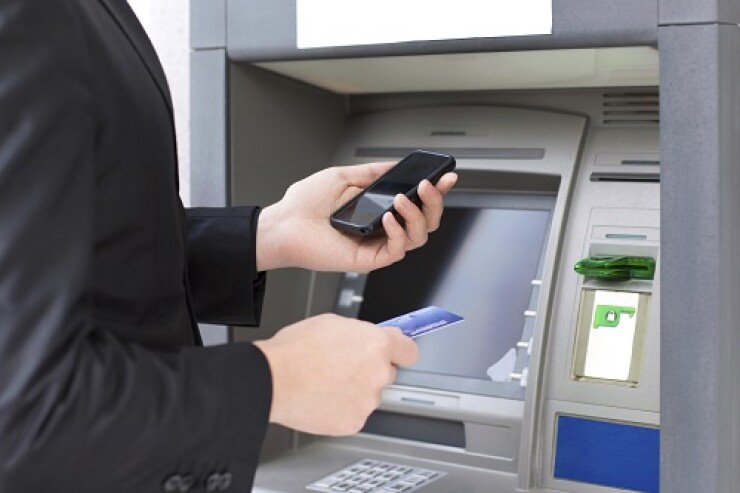
So long branches, hello smartphones.
The widespread and rapidly growing consumer adoption of mobile technology has long had implications for the banking and financial services industries, and now it has reached a critical turning point.
In the U.S., nearly one in four banking consumers, or 56 million people, consider themselves “mobile first,” primarily using a mobile device to access their checking accounts, according to a new study from Javelin Strategy & Research.
The number of people accessing their banks weekly via a mobile device is now equal to the numbers who visit a bank branch, the study found.
Just four years ago, only 9% of banking consumers regularly reached for their smartphone or tablet. Now, that share has climbed to 27%.
During that same period, weekly visitors to brick and mortar bank branches shrunk to 28% of bank customers from 40%.
“Mobile banking is rising while branch banking is falling,” said Mary Monahan, executive vice president and research director at Javelin Strategy & Research.
The numbers speak volumes as to why banks and other financial services companies need to work harder to capture mobile first customers.
POURING BILLIONS
Banks are already pouring billions of dollars into technology. Chase, for one, has invested 8% to 9% of its annual revenue to fund global technology over the past six years.
At the same time, Chase is closing branches, stating in February that it expects to shutter 300 locations over the next two years.
And banks are reaping rewards from catering to mobile first customers. As much as 13% of deposits made by Bank of America’s customers in the first quarter of this year were done via mobile, the bank reported.
Even so, there’s still a gap to be filled in providing consumers with a full plate of mobile financial services.
For instance, while 90% of the country’s top 30 banks offer mobile deposit, only 17% allow consumers to open an account through a mobile device, according to Javelin’s research.
Another cause of frustration for customers: people who bank via their smartphones or tablets can’t complete transactions, meaning they have to go online or to a bank branch to finish the job.
“So far, it’s very difficult to get an end-to-end mobile journey,” Monahan said. “We have to start treating mobile as the first screen.”
'GOING FORWARD'
Banks that don’t offer a compelling mobile experience run the risk of losing customers to a crop of mobile first banking firms, such as Moven, Simple, Serve and GoBank. These startups offer low-fees, broad ATM networks and a wide array of advanced features.
Other financial institutions, namely brokerage firms, are also increasingly catering to mobile first customers, though they too need to do more.
“Segments like banking and brokerage have done a good job, so far, in meeting basic client needs around account information and transactions, said Daniel Wiegand, director, consulting services, at Corporate Insight, a financial services market research firm.
“The challenge going forward is going to be providing end-to-end experiences, including opening accounts and account services for mobile first customers.”
With $221,000 in investible assets vs. $310,000 for online first and $314,000 for branch first, mobile first banking customers are the least wealthy of the bunch.
But they’re potentially a strong revenue source as they tend to be younger -- the mean age is 39 -- have higher rates of employment, and are in need of bank credit and loan products.
They also tend to be female, and Apple is their first choice for mobile devices.
“They are at an early stage of their financial life,” Monahan said. “This is the easiest time to capture this group.”
Phyllis Furman, a financial writer in New York, has contributed to TheStreet.com and the New York Daily News.
Read more:





